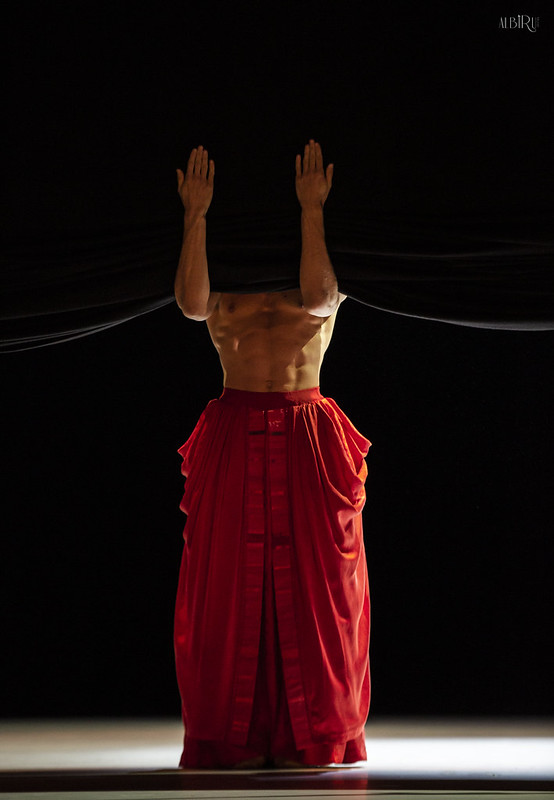Repertoire
Bella Figura
The basic idea, as well as all the building material, with which Bella Figura was made, is not very complicated, but, maybe not so simple either, whenever viewed through the perspective of our experience. It is a "Parable" on the relativity of sensuality, beauty and aesthetics in general, and on the question, how we face the phenomenon in our everyday life. It is a journey through time and space, illuminating our dignity, as well as our doubt. Finding beauty in a grimace - in a knot of the mind - or in a physical contortion. It is like trying to perform a balancing act on the string of your umbilical cord. For the dancers, it is not only a manifestation of their competence, aesthetic qualities or technical accomplishment, but equally, it represents their acceptance of their deficiencies, doubts and vulnerability.
The words "Bella Figura” in Italian don't only stand for “Beautiful body", they also represent a philosophical resilience of people facing a difficult situation consequently it also means "Putting on a brave face"… With other words the people in the audience will not know, whether the actor who is performing for them tonight, is in a difficult situation or not, they will not know anything about his personal problems but the actor also knows that they don't know. All he knows is, that they bought tickets to see him, and that they want to be entertained. So he puts on his Bella Figura.
He puts on his “Brave face”, no matter what…
For a long time, I have asked myself the questions: “…What is a performance, and who are actually the performers?" And... When does the performance actually begin? Does it begin when the curtain raises, or at the moment of our birth - or does it all only start when the choreographer asks the dancers to learn their first steps? Does the performance start when the dancers start putting. Does the show finish whenever they leave the stage or does it carry on until the end of our days? What is the difference between the clothes we wear in the street and the stage costume? Where lies the border between art and artificiality or between fantasy and reality? And finally: Where is the border between the truth and a lie in any case? - all these things, which I have just tried to describe to you can be explained in a much easier way. Imagine that you had a dream in which you fell out of your bed, and as you wake up next morning, you realize that you have a broken rib.
-Jirí Kylián -
- World premiere by: the Nederlands Dans Theater, at AT&T Theater Den Haag (Holland), October 12th 1995
- Premiere by Compañía Nacional de Danza: at Teatro Real, Madrid (Spain), October 3rd, 2022

Información
-
Choreography and concept:Jirí Kylián
-
Music:Lukas Foss - Slow (5th movement), from the Suite Solomon Rossi Giovanni Battista Pergolesi - Stabat Mater Overture Lukas Foss - Andante (3rd movement), from the Suite Solomon Rossi Alessandro Marcello - Adagio (2nd movement), from the Concerto for oboe, strings and continuo in D minor Antonio Vivaldi - Andante (2nd movement), from the Concerto for Two Mandolins in G Major Giuseppe Torelli - Grave (1st movement), from Concerto Grosso No. 6 in G minor Giovanni Battista Pergolesi - Quando corpus (final) of the Stabat Mater
-
Stage Design:Jirí Kylián
-
Costume Design:Joke Visser
-
Lighting Design:Jirí Kylián
-
Technical Coordination:Joost Biegelaar
-
Assistants to the Choreographer:Ken Ossola, Elke Schepers
-
Sets made by:Gerriets, Taga
-
Costumes made by:Carmen Garnell, Wardrobe CND
-
Running time:30 minutes
-
Premiere cast CND:Mar Aguiló, Erez Ilan, Clara Maroto, Isaac Montllor, Shani Peretz, Laura Pérez Hierro, Ana Pérez-Nievas, Benjamin Poirier, Alessandro Riga








